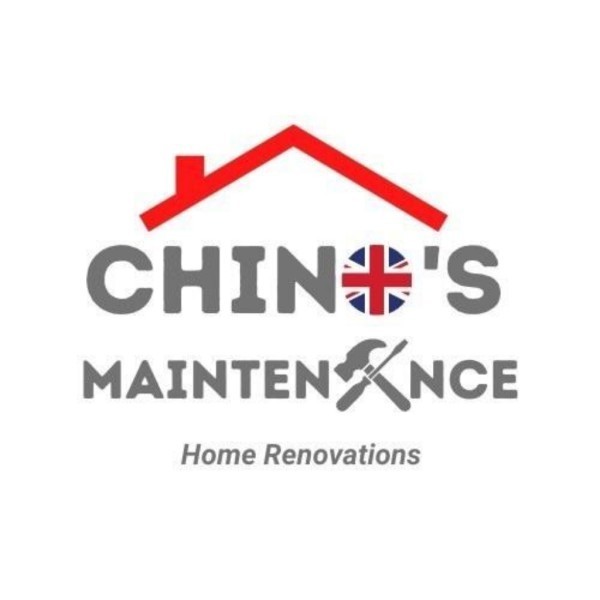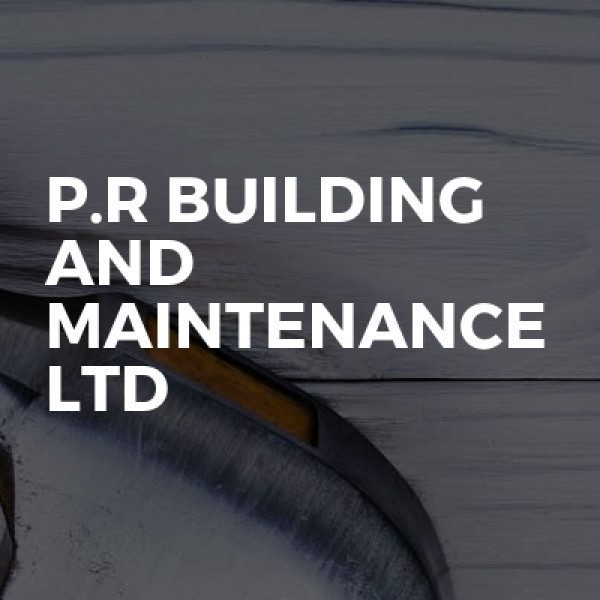Garage Conversions in Adlington
Welcome to JMW Building Services NW Ltd, your go-to experts for all building needs in Bolton and across Greater Manchester. As a leading... read more »
Welcome to TKO Kitchens & Construction LTD, your go-to experts for all things construction in Peel Green and Gr... read more »
Welcome to Omnis Developments Ltd, your go-to experts for all building and renovation needs in Tower Hill and across Merseyside. As a lea... read more »
Welcome to Brandon Green Homes T/a Renovaserve Ltd, your trusted partner for all your buildin... read more »
Welcome to Chinos Maintenance Ltd, your go-to experts for all building and refurbishment needs in Greater Manchester. Based in... read more »
National Plumbing And Heating is a renowned Bruche-based company, proudly serving the vibrant community of Cheshire. Spe... read more »
AJBS: Your Trusted Tradespeople in Wigan and Greater Manchester
Welcome to AJBS, your go-to experts for all thin... read more »
Welcome to Dirossi Building Services, your premier choice for expert building solutions in Radcliffe and throughout Greater Manchester. A... read more »
Welcome to Hawk Construction, your trusted partner for all construction needs in Sunny Bank and across Greater Manchester. As a leading b... read more »
Welcome to Nest Building Services Ltd, your go-to experts for all building needs in Holcombe and the Greater Manchester area. As a well-e... read more »
Welcome to Olliebrad Building Services, your go-to experts for all building needs in Hindley Green and the Greater Manchester area. Speci... read more »
Lee Leatherbarrow Building and Roofing is a premier choice for property maintenance in Broad Oak, proudly serving the Me... read more »
MCL Design & Build Ltd, nestled in the heart of Moorside, is your premier choice for extension builders and garage conve... read more »
Welcome to Elevate Construction Group Ltd, your trusted partner for all your building needs in Leyland and throu... read more »
Welcome to LS Construction (North West) Limited, your premier choice for expert building services in Hulme and throughout Cheshire. As sp... read more »
P.R Building And Maintenance Ltd is a reputable company based in the heart of Wigan, proudly serving the Greater Manches... read more »
Welcome to Hall's Home Improvements and Renovations L... read more »
Welcome to Affordable Home Improvements, your trusted... read more »
Welcome to Grant Construction Services Limited, your... read more »
Welcome to Barra Projects, your premier choic... read more »
Search Garage Conversions in places nearby
- Garage Conversions in Lancaster
- Garage Conversions in Preston
- Garage Conversions in Accrington
- Garage Conversions in Bacup
- Garage Conversions in Bamber Bridge
- Garage Conversions in Barnoldswick
- Garage Conversions in Barrowford
- Garage Conversions in Blackburn
- Garage Conversions in Blackpool
- Garage Conversions in Brierfield
- Garage Conversions in Burnley
- Garage Conversions in Carnforth
- Garage Conversions in Chorley
- Garage Conversions in Church
- Garage Conversions in Clayton-Le-Moors
- Garage Conversions in Cleveleys
- Garage Conversions in Clitheroe
- Garage Conversions in Colne
- Garage Conversions in Darwen
- Garage Conversions in Earby
- Garage Conversions in Fleetwood
- Garage Conversions in Freckleton
- Garage Conversions in Fulwood
- Garage Conversions in Great Harwood
- Garage Conversions in Haslingden
- Garage Conversions in Heysham
- Garage Conversions in Kirkham
- Garage Conversions in Leyland
- Garage Conversions in Longridge
- Garage Conversions in Lytham St Anne's
- Garage Conversions in Morecambe
- Garage Conversions in Nelson
- Garage Conversions in Ormskirk
- Garage Conversions in Oswaldtwistle
- Garage Conversions in Padiham
- Garage Conversions in Poulton-Le-Fylde
- Garage Conversions in Rawtenstall
- Garage Conversions in Rishton
- Garage Conversions in Skelmersdale
- Garage Conversions in Thornton
- Garage Conversions in Trawden
- Garage Conversions in Whitworth
Understanding Garage Conversions in Adlington
Garage conversions in Adlington have become increasingly popular as homeowners seek to maximise their living space without the hassle of moving. This transformation can add significant value to your property while providing a functional and stylish new room. Whether you're considering a home office, a playroom, or an additional bedroom, converting your garage can be a cost-effective solution.
The Benefits of Garage Conversions
Garage conversions offer numerous benefits that make them an attractive option for homeowners. Firstly, they provide additional living space without the need for an extension, which can be more costly and time-consuming. Secondly, they can increase the value of your home, making it a wise investment. Lastly, a well-executed conversion can enhance the aesthetic appeal of your property, creating a seamless transition between the existing structure and the new space.
Cost-Effectiveness
One of the primary advantages of garage conversions is their cost-effectiveness. Compared to building a new extension, converting an existing garage is typically less expensive. This is because the basic structure is already in place, reducing the need for extensive construction work. Additionally, planning permission is often not required, further reducing costs and simplifying the process.
Increased Property Value
Converting your garage can significantly increase the value of your property. According to property experts, a well-executed garage conversion can add up to 20% to the value of your home. This makes it an excellent investment, particularly in areas like Adlington, where property prices are steadily rising.
Enhanced Aesthetic Appeal
A garage conversion can enhance the aesthetic appeal of your home by creating a cohesive and stylish living space. With careful planning and design, the new room can blend seamlessly with the existing structure, enhancing the overall look and feel of your property.
Planning Your Garage Conversion
Before embarking on a garage conversion, it's essential to plan carefully to ensure the project meets your needs and budget. This involves considering the purpose of the new space, the design and layout, and any necessary structural changes.
Determining the Purpose
The first step in planning a garage conversion is determining the purpose of the new space. This will influence the design, layout, and any necessary structural changes. Common uses for converted garages include home offices, playrooms, additional bedrooms, or even a home gym.
Design and Layout
Once you've determined the purpose of the new space, it's time to consider the design and layout. This involves thinking about the room's size, shape, and any necessary structural changes. It's also essential to consider the placement of windows and doors to maximise natural light and create a comfortable living environment.
Structural Changes
Depending on the purpose of the new space, you may need to make structural changes to the existing garage. This could involve raising the floor level, adding insulation, or installing new windows and doors. It's essential to work with a qualified contractor to ensure any structural changes are safe and comply with building regulations.
Legal Considerations for Garage Conversions
While garage conversions are generally straightforward, there are some legal considerations to keep in mind. This includes understanding planning permission requirements, building regulations, and any potential impact on your property's insurance.
Planning Permission
In most cases, garage conversions do not require planning permission, as they are considered permitted development. However, there are exceptions, particularly if your property is in a conservation area or if the conversion involves significant structural changes. It's always best to check with your local planning authority to ensure compliance.
Building Regulations
While planning permission may not be required, garage conversions must comply with building regulations. These regulations ensure the new space is safe, energy-efficient, and accessible. Key areas covered by building regulations include structural integrity, fire safety, insulation, and ventilation.
Insurance Implications
Converting your garage can impact your property's insurance, so it's essential to inform your insurer of any changes. This ensures your policy accurately reflects the new layout and value of your home, providing adequate coverage in the event of a claim.
Choosing the Right Professionals
Working with the right professionals is crucial to the success of your garage conversion. This includes architects, contractors, and interior designers who can help bring your vision to life while ensuring the project meets all necessary regulations and standards.
Architects
An architect can help you design a functional and aesthetically pleasing space that meets your needs and budget. They can also assist with planning permission applications and ensure the project complies with building regulations.
Contractors
Choosing a reputable contractor is essential to ensure the project is completed to a high standard. Look for contractors with experience in garage conversions and check references and reviews to ensure they have a track record of delivering quality work.
Interior Designers
An interior designer can help you create a stylish and functional space that reflects your personal taste. They can assist with choosing colours, materials, and furnishings that complement the existing structure and enhance the overall aesthetic appeal of your home.
Common Challenges and Solutions
While garage conversions offer numerous benefits, they can also present challenges. Common issues include limited space, structural constraints, and budgetary concerns. However, with careful planning and the right professionals, these challenges can be overcome.
Limited Space
One of the most common challenges with garage conversions is limited space. However, with clever design and layout, even small garages can be transformed into functional and stylish living areas. Consider using multi-functional furniture and built-in storage solutions to maximise space.
Structural Constraints
Structural constraints can also pose challenges, particularly if the garage is attached to the main house. It's essential to work with a qualified contractor to address any structural issues and ensure the new space is safe and compliant with building regulations.
Budgetary Concerns
Budgetary concerns are another common challenge, particularly if the project involves significant structural changes. To keep costs under control, it's essential to plan carefully and prioritise essential elements. Consider obtaining multiple quotes from contractors to ensure you're getting the best value for your money.
Maximising Space in Your Garage Conversion
Maximising space is crucial to the success of a garage conversion, particularly if the garage is small. With clever design and layout, even the smallest garages can be transformed into functional and stylish living areas.
Multi-Functional Furniture
Multi-functional furniture is an excellent way to maximise space in a garage conversion. Consider using sofa beds, fold-away tables, and built-in storage solutions to create a versatile and functional living area.
Built-In Storage Solutions
Built-in storage solutions can help maximise space and keep the new room clutter-free. Consider using shelves, cupboards, and under-stair storage to create a tidy and organised living area.
Open-Plan Design
An open-plan design can create a sense of space and light, making even the smallest garages feel larger. Consider removing internal walls and using light colours and materials to create a bright and airy living area.
Incorporating Natural Light
Incorporating natural light is essential to creating a comfortable and inviting living space. Consider installing windows, skylights, or glass doors to maximise natural light and create a bright and airy environment.
Windows
Windows are an excellent way to bring natural light into a garage conversion. Consider installing large windows or bay windows to maximise light and create a connection with the outdoors.
Skylights
Skylights are another excellent option for bringing natural light into a garage conversion. They can be installed in the roof to create a bright and airy living space, particularly in garages with limited wall space for windows.
Glass Doors
Glass doors can also help maximise natural light and create a seamless connection between the new room and the outdoors. Consider using sliding or bi-fold doors to create a bright and inviting living area.
Creating a Comfortable Living Environment
Creating a comfortable living environment is essential to the success of a garage conversion. This involves considering factors such as insulation, heating, and ventilation to ensure the new space is comfortable and energy-efficient.
Insulation
Insulation is crucial to creating a comfortable and energy-efficient living space. Consider using high-quality insulation materials to keep the new room warm in winter and cool in summer.
Heating
Heating is another essential consideration for creating a comfortable living environment. Consider installing underfloor heating or radiators to ensure the new space is warm and inviting.
Ventilation
Ventilation is also essential to creating a comfortable and healthy living environment. Consider installing windows, skylights, or ventilation systems to ensure the new space is well-ventilated and free from damp and condensation.
Decorating Your Garage Conversion
Decorating your garage conversion is an exciting opportunity to create a stylish and personalised living space. Consider using colours, materials, and furnishings that reflect your personal taste and complement the existing structure.
Colours
Colours can have a significant impact on the look and feel of a room. Consider using light colours to create a bright and airy living space, or bold colours to create a cosy and inviting environment.
Materials
Materials can also play a crucial role in the overall aesthetic appeal of a garage conversion. Consider using natural materials such as wood or stone to create a warm and inviting living space.
Furnishings
Furnishings are an excellent way to personalise your garage conversion and create a stylish and functional living area. Consider using multi-functional furniture and built-in storage solutions to maximise space and create a tidy and organised environment.
Frequently Asked Questions
Do I need planning permission for a garage conversion in Adlington?
In most cases, planning permission is not required for a garage conversion, as it is considered permitted development. However, it's always best to check with your local planning authority to ensure compliance.
How much does a garage conversion cost?
The cost of a garage conversion can vary depending on the size and complexity of the project. On average, you can expect to pay between £10,000 and £20,000 for a standard conversion.
How long does a garage conversion take?
The duration of a garage conversion can vary depending on the size and complexity of the project. On average, a standard conversion can take between four to six weeks to complete.
Will a garage conversion add value to my home?
Yes, a well-executed garage conversion can add significant value to your home, with experts estimating an increase of up to 20% in property value.
Can I convert a detached garage?
Yes, detached garages can be converted into functional living spaces. However, additional considerations such as access and utilities may need to be addressed.
What are the building regulations for garage conversions?
Building regulations for garage conversions cover areas such as structural integrity, fire safety, insulation, and ventilation. It's essential to work with a qualified contractor to ensure compliance with these regulations.
Send a message





















